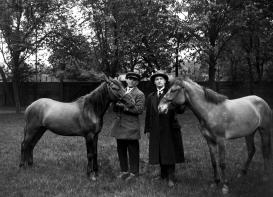Despite numerous episodes of captive reproduction for display and acclimatization purposes, systematic breeding for species conservation became the central mission for European zoological gardens only in the interwar period of the twentieth century. This project examines some of the earliest de-extinction projects to map out the shared epistemic cultures of life sciences that flourished in Central Europe at that time. Focusing on the back breeding of the tarpan wild horse (Equus ferus ferus) and the reintroduction of the wisent (Bison bonasus) in Poland, it explores how scientific ideas about heredity and hybridization allowed for mobilizing selective breeding as a means of bringing back the extinct, and preserving the extant species. In addition to mapping out knowledge exchange between zoologists, geneticists, and paleontologists, the project traces the circulation of specimens between natural history museums, zoos, and wildlife reserves to underscore the material dimension of modern wildlife conservation practices.

Zoologist Tadeusz Vetulani (right) and veterinarian Ludwik Remiszewski (left) with a pair of Polish konik horses at the Poznań Zoo, 1928. Narodowe Archiwum Cyfrowe, Poland, 3/1/0/8/2615.
Project
(2020-2022)
